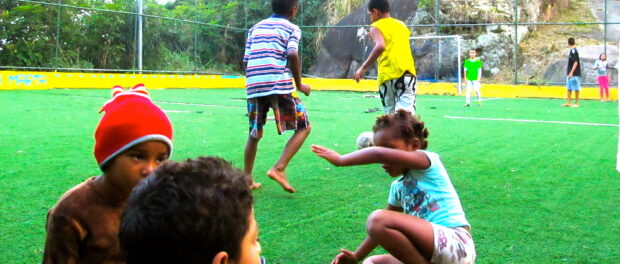
What is Play?
Play is the action of simply having fun. It encompasses a range of activities that can be accomplished with the body, the mind, with props, and with words. Through play, imagination expands as limits are tested and the world explored. As such, play contributes in important ways to children’s developmental growth.
Public playgrounds, when providing carefully-designed equipment and spaces, give children an arena in which to expel energy through spontaneous action, all within a safe environment. They also present opportunities for interaction, acting as meeting points for kids to congregate with fellow youth, from a variety of backgrounds. This, in turn, enables mutual learning through children’s shared experiences.
However, traditional playground structures have come under scrutiny in recent decades, due to their inability to fulfill this potential as a consequence of their rigid design. The adventure playground emerged as a progressive alternative that appeared significantly more stimulating, yet wild, compared to traditional forms. And in the past decade a number of safe-design adventurous playgrounds have emerged.
Of course, children do not only confine themselves to such spaces in order to engage in play, and instead occupy many available private and public spaces which they transform into temporary playgrounds. The available public spaces in favelas of Rio de Janeiro see this treatment, while the traditional playground equipment in these communities remains largely run-down and underutilized by residents.
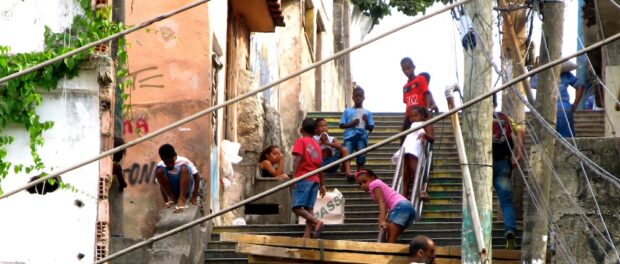
How do Children Play?
Play commences in simple forms and grows increasingly complex as a child grows older. It is through play that they come to explore their natural tendencies and test their boundaries. As such, it stimulates brain development and contributes to emotional well-being. Play can be divided into four categories:
Physical play, such as climbing, jumping, and running–provides a range of health benefits, develops gross and fine muscle strength, and allows children to test their abilities and limitations.
Constructive play, working with props such as building blocks, or mediums like sand or dirt–allows children to manipulate different objects, encouraging them to make decisions that lead to trial-and-error conclusions and new discoveries.
Fantasy or pretend play allows children to explore with languages and emotion–providing a means to cope and express their feelings which contributes to emotional maturity. It also promotes the development of flexible thinking beyond the here and now.
Social play, by interacting with others–allows children to learn social rules as well as moral reasoning.
Therefore, playing contributes to a child’s social, emotional, physical and creative development.
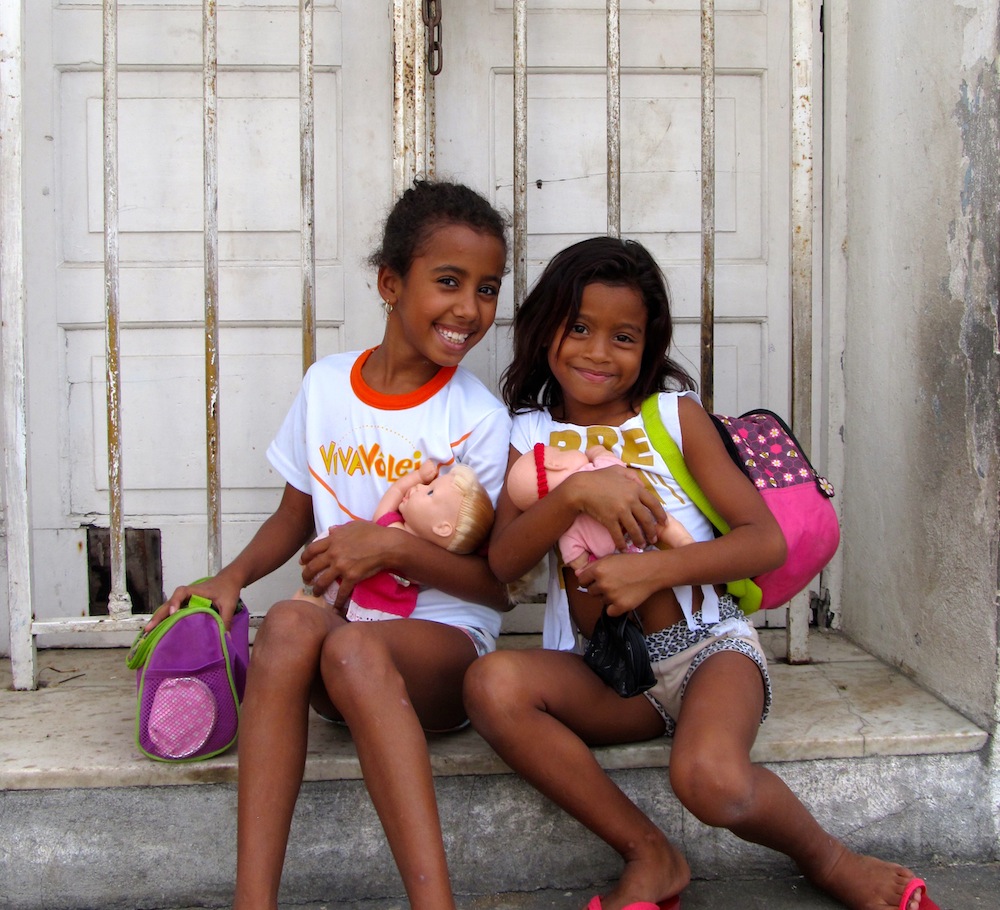
Playgrounds were first introduced in the late 1800s, as special places in which children could play safely amidst the dangerous and increasingly traffic-dominated streets of rapidly urbanizing cities. Prior to this, children would have been free to play and roam in wide open spaces of the countryside or urban streets marked by slower forms of transit. Much like today, the first playgrounds were focused primarily on a child’s physical development and their citizenship. In 1959, it was established in the Declaration of the Rights of the Child that play was a universal right of any individual, and at the same time, an instrument of social policy. In this sense, play was and remains subject to the whims of social and political designers.
Traditional playground structures are often made up of the four S’s: the swing, slide, sandbox, and seesaw. However, these are unable to adjust with the changing needs of the child. Though playgrounds later expanded to include climbing equipment, many of their uses have been restricted in developed nations due to the rising prominence of safety-first designs. In fact, many tall jungle gyms and slides were subsequently removed from American playgrounds because of parental concerns, federal guidelines, new safety standards set by the equipment manufacturers, and the fear of lawsuits. Furthermore, once the fixed equipment has been explored, it may be misused or left unused. The child, becoming bored, then sees their curiosity driven elsewhere. The adventure playground thus emerged as a worthy counterpart to these playground forms by providing plenty of opportunities for children’s changing needs and whims.
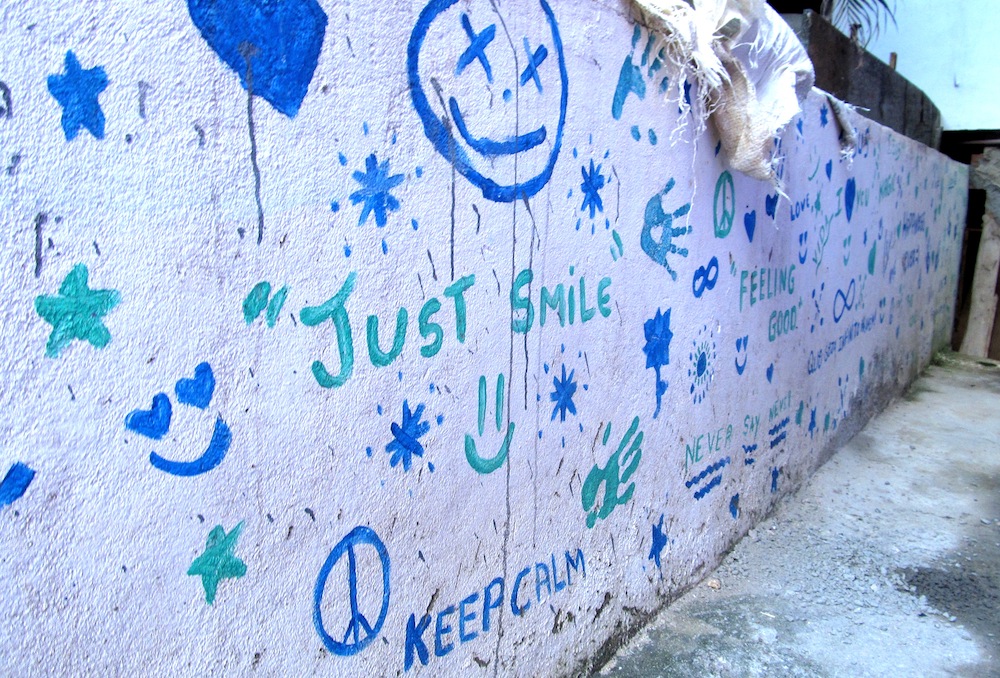
Adventure Playgrounds
The adventure playground differs from traditional designs because its practices hinge on the child’s own free will in order to ensure the materials’ usefulness and engagement. Here, children introduce the content and meaning to their playground experience through their own actions. There exists no ready-made equipment and no pre-fabricated agenda for what should take place. Much like the Accidental Playground Daniel Campo described, these environments encourage the pleasure of experimenting, making, and destroying. Its formula is based on earth, fire, water, and creative materials. A play leader, in a non-interfering manner, supervises and assists the children with their activities should they ask. This type of playground is promoted as being closer to the true nature of the child because play is completely dictated by their own creativity and developing skill set. Finally, in this active and participatory form of recreation, citizenship is learned rather than enforced by design, based on the children’s practices of self-governance and solidarity.
The concept originated in Denmark under landscape architect Carl Theodore Sorensen’s 1931 vision. His junk playground, first erected in 1943 in Emdrup, allowed children to create, shape, dream, and imagine a reality all their own. The design was brought to the UK by landscape architect Lady Allen of Hurtwood, who observed children’s occupation of construction sites for play rather than formal, stagnant playgrounds. In advocating for its inception in post-war London, the junk aesthetic was controversial due to its associations with delinquency and crime. Aptly renamed the adventure playground, these play sites mimicked the adventure, inquiry and unpredictability of the natural and urban environment. Located on bombed and ruined war sites, they were temporary in nature, and thus allowed for children to experience the destroyed area before its redevelopment. It fostered the long-term narrative of reconstruction by playfully addressing the physical and psychological damage of war, while still facilitating destructive play as part of the expansion of knowledge of the empirical world.
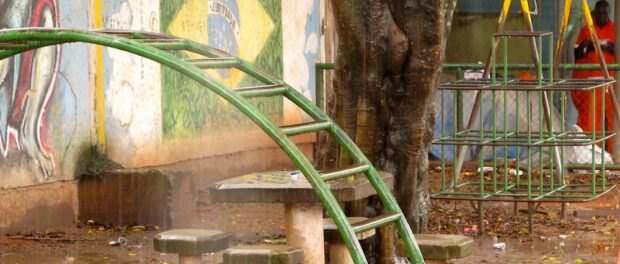
Play in Rio’s Favelas
The ever-changing processes of construction, demolition and reconstruction are prevalent in the dense built environments of favelas, historically with residents building and rebuilding homes over generations, and even more so perhaps today as many external forces are driving these factors. As such, though simple playgrounds are present in some communities, the vitality of the favelas themselves are more stimulating than a rusty swing set or slide. The fluidity between private and public places, and lack of automobile-based traffic, promotes more opportunities for play based on the informal and ad-hoc nature of the public spaces themselves. The following observations of favela kids at play demonstrate the resourcefulness of the children and youth in Rio’s informal communities.
In Complexo do Alemão, children scaled the stairs and slopes of the Itararé cable car station’s concrete wall and along its flatter surfaces, youth were playing football. The small playground adjacent to the station remained unused.
In Morro da Providência, children congregated around the main steps and reinvented it into a jungle gym. On a chess table, two boys dumped a bag of small rocks onto the surface and commenced a concentrated game. Two young girls nursed and cared for their baby dolls near church steps.
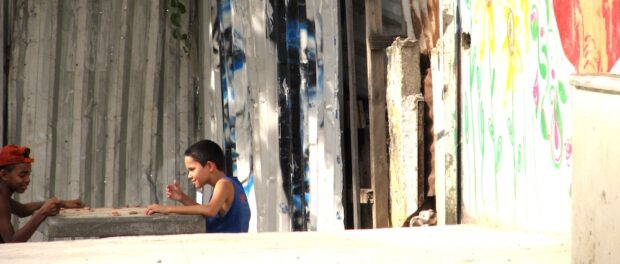
In Santa Marta, a group of young children had collected a bag of pebbles, throwing them up in the air, at walls, and each other. Amidst the roughhousing, there were tumbles, pulling, smacking, tears, and giggles, with the five young children overcoming their chaos and disagreements. Others collected bags of stones and plastic bottles, occupying themselves to the task. On the football pitch, different age groups of kids were engaged in separate matches and scrimmages. The younger kids had scrambled up a wall to get a better view. From here, it was also easy to see that a small playground with a little jungle gym wasn’t being used either. Kite flying also seemed to be a competitive pastime for older youth with patience and perseverance.
Finally, in Vila Autódromo, though a sizable playground with a selection of equipment exists, three young boys moved on from the small jungle gym. They scaled a tin roof to overlook the wall blocking their view of the Olympic Park site.
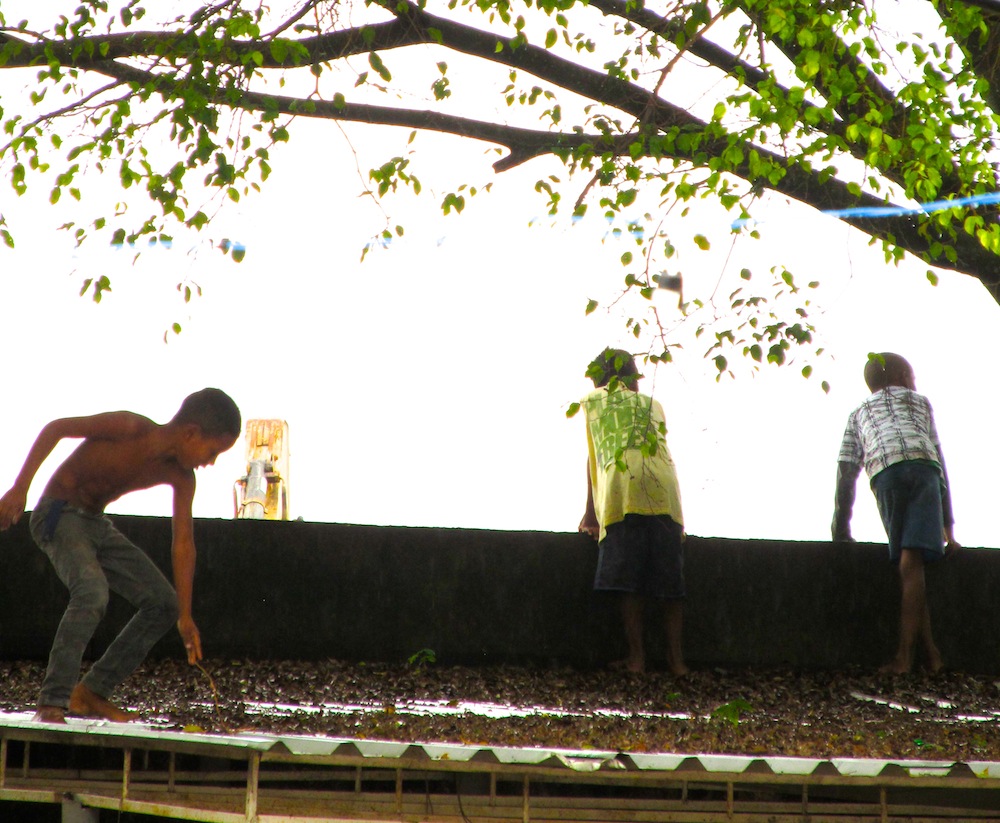
From these observations it is evident that, though lacking a defined space for doing so, ad-hoc play that makes do with the materials children have and come across are more than sufficient for most. Traditional playground structures in favelas do not seem to contribute to children’s growth and development in neither exercise nor citizenship. Instead, it appears as if the favela as a whole acts as an informal adventure playground. Children and adolescents experience the unpredictability of the urban environment around them, and their resourcefulness allows them to have fun in their everyday world.
Caitlin Dixon holds a Bachelor’s Degree in Geography: Urban Systems from McGill University, and has a keen interest in exploring the creation and use of public spaces in different urban landscapes.

